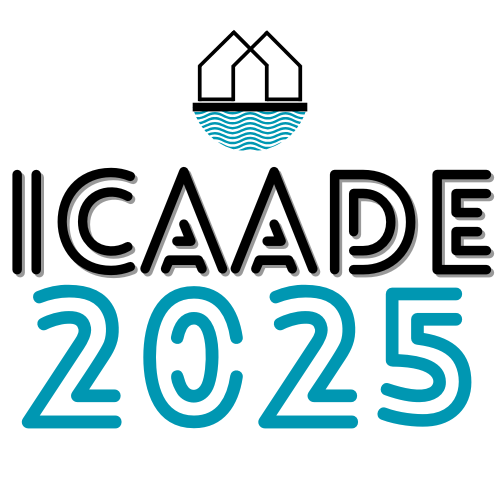NAVIGATE 2019 WEBSITE
RETURN TO 2023
CONFERENCE
Keynote Speakers
Plenary Speakers
Program
Welcome Reception
Conference Dinner
”Amphibious Warsaw” Field Trip
Registration
For Authors
Topics
Posters
Publication
Important Dates
Policy Symposium (GAPS)
Issue & Proposal
Schedule
Registration
LOCAL INFORMATION
Travel & Transportation
Accommodation
Amphibious Warsaw
Sponsors
Become a Sponsor
2019 Sponsors
ICAADE 2019 in Media
COMMITTEES
Executive Committee
International Steering Committee
Local Organizing Committee
Scientific Review Committee
CONTACT US
PREVIOUS CONFERENCES
The Scope of the Amphibious
Amphibious refers to the ability to live with water and with land. The volatility of waterflows is one basic characteristic in amphibious spaces. Living with changing states of material - fluid, solid or any state in-between - is another characteristic of amphibious living spaces and their rhythms. Living in spaces of amphibious, procedural, and dynamic flows need locally adapted solutions that include natural, social and technological processes embedded in the economic setting. Interdisciplinary perspectives are required to assess the appropriateness of approaches and solutions in a pivotal field of anthropogenic influence. Laws and regulations are challenged in the intermingling zone of water and land. Protection from water, living in/on/next to water or letting water define our livelihood are different mindsets, yet have in common the water and land as constituting elements of being.
It is an exploration to understand the interlocking scales, times and structures around the shifting amphibious issues.
CONFERENCE TOPICS
We invite academicians, researchers, professionals and students to submit abstracts addressing the following topics:
Amphibious Anthropocene
The processes of surface alteration of landscapes and climate change induced by humans affect habitability and material cycles. The settlement in areas that are periodically, seasonally or spontaneously flooded raises questions about the handling of surfaces and cycles at all spatial and temporal scales: Molecular processes of the technosphere; translocal effects of life and work in and on the water; impacts of dams on floodplains; multidimensional conflicts in the water-energy-habitat nexus. Looking at the Anthropocene from an amphibious perspective invites to a broad spectrum of interdisciplinary cross sections, including arts, humanities and life sciences.
Systems and Climate Change Resilience
The consideration of floating buildings and settlements from a systemic perspective and with a climate change framing can reveal translocal, surprising interrelations, which can remain undiscovered in a project-related perspective. The study of SEETS (Social economic ecologic technical systems), for example, helps to classify floating constructions in their broader organizational, temporal and spatial frames of reference. Resiliencies, path-dependencies and lock-ins can be uncovered and identified which can prevent or promote an attitude, a project or a transformation or which can only arise through an amphibious way of building and living.
People and Communities
Amphibious and floating houses, like any other building need to be contextualized and are one solution to flood mitigation and risk reduction. The social organization of villages on or next to the water includes more dimensions than on land. The rhythms of water determine the hydrosocial life. Fluidity, flow and flux are starting points to understand the connection of people in their amphibious environments. How can communities exist and be developed on water? What needs to be considered when planning for a living with and on water?
Technology and Construction
Technology is knowledge embedded in objects. Marine and building technology combines long-term technical experiences, craftsmanship, design and engineering to a locally adaptive solution: retro-fit, traditionally adapted, low- or high-tech new living and working areas. In recent years the technical and engineering aspects of amphibious construction are receiving more and more attention, with many researchers and practitioners working on the topic. The technical aspects of site preparation including infrastructure systems such as water storage and drainage, road infrastructure, energy storage and production, drinking water and sanitation at the local level are crucial aspects of sustainable construction designs.
Heritage and Time Scales
There is much that todays society can learn from historical examples of amphibious strategies. For centuries, urban and rural populations living in regions with intermittent flooding have utilized solutions to protect their lives and property. Some are considered as tangible or intangible heritage and deserve preservation and protection. Both, historical and recent decisions on the contested spaces of floodscapes had immediate, intermediate and long-term effects. Understanding the long-term impacts on floodplains, alluvial meadows and river banks by human interactions can help to identify ways of introducing large amphibious or floating settlements in accordance with environmental and societal issues.
Markets and Regulations
The micro- and macroeconomic conditions for investments in amphibious or floating buildings are characterized by ambiguities in the framework conditions of building law, insurance classifications and legal regulations. How can a market diffusion succeed and what obstacles still exist? What are the upscaling possibilities in the field of retrofitting and new construction? What are the entrepreneurial, financial and logistical dimensions of amphibious construction?



